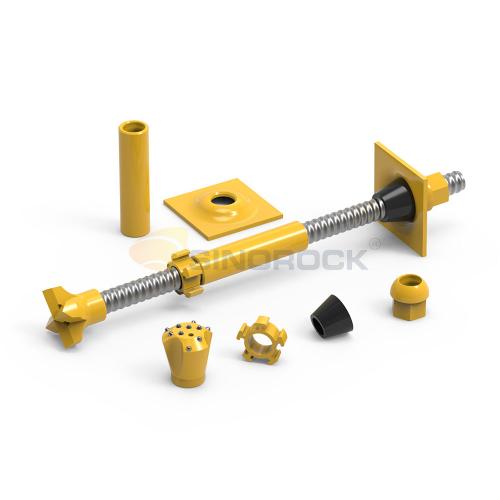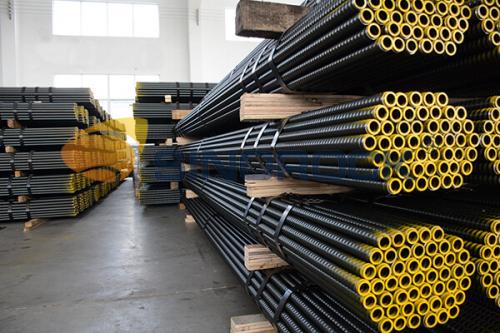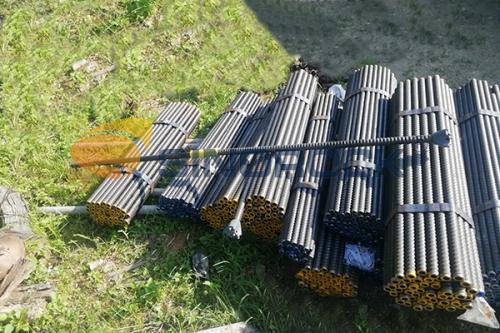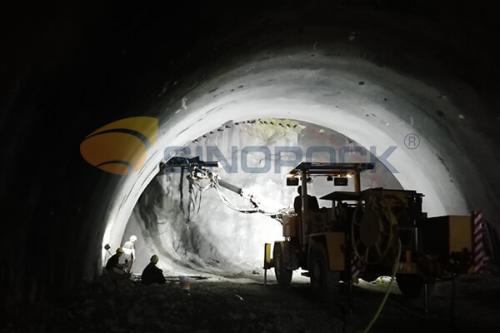How Do Self-Drilling Hollow Rock Bolts Support Backfill Foundation Slopes?

The
common support methods for backfill foundation pit slopes include ordinary rock
bolt support and casing drilling support. These construction processes may
cause problems such as slow and difficulty in drilling, holes collapsing,
blockage of grouting channels, difficulty in ensuring grouting effect, and
material waste, which may affect the construction progress. To ensure the
project can be completed smoothly, Sinorock recommends using self-drilling
hollow rock bolts.
Difficulties in
Backfill Foundation Slope Support
Collapsed Hole
The
backfill soil is loose and the composition is relatively complex. Reliable wall
protection measures should be taken to the foundation slope support, otherwise,
the problem of hole collapsing will easily occur. However, if the casing wall
construction encounters large debris, it will also face the problem of
difficult hole formation.
Localized
Deformation
The
backfill soil has large porosity, high water content, and a lot of organic
matter and humic substances, which leads to a decrease in the bearing capacity
of the foundation, a large deformation, and low shear strength. The phenomenon
of localized deformation reduction may occur in the support material under
tensile stress.
Poor Grouting Effect
The
trickiest point of reinforcing the backfill foundation slope with rock bolts is
that the soil cannot provide enough cohesion, and the rock bolts are likely to
fail to reach the designing ultimate load. Since the miscellaneous fill
contains hard objects such as bricks and slag, ordinary soil nails cannot form
holes. If the construction of the anchor rod adopts the follow-pipe drilling
process, it is difficult to ensure that the anchor rod can reach the design
load by grouting.
Self-Drilling
Hollow Rock Bolt Support Technology
Locate Drilling
Positions
Determine
the location of each drill hole according to the design drawings. When
drilling, the construction shall be carried out according to the design angle.
Connect the Anchor
Rod and Drill Bit
It
is necessary to select the material and structure of the drill bit according to
different geology. The rod body of the self-drilling hollow grouting anchor rod
is the drill rod and the grouting pipe. The drilling can be realized by
connecting the anchor rod and the drill bit with the grouting hole. The
function of grouting and anchoring is integrated.
Synchronous Drilling
and Grouting
The
rod body of the self-drilling bolt can be used as a grouting pipe. The grouting
material is pure cement slurry, which is stirred evenly. The grouting pressure
needs to be ≥1.5MPa. If necessary, secondary grouting or grouting is required
to ensure the pull-out force value of the bolt.
Lengthen the Anchor
Rod
Choose
whether to match the connecting sleeve according to the drilling depth. After
the anchor rod is drilled in place, install the connecting sleeve at the end of
the anchor rod, and then install the second-rod body on the other end of the
connecting sleeve and continue drilling.
Pull Test
After
the cement slurry solidifies, it will be combined with the anchor rod and the
surrounding rock mass to form a section of the anchor body, and the mutual
friction between the three will generate a pull-out force. It needs to be
tested to prove that the pull-out bearing capacity meets the design
requirements.
Self-drilling
hollow rock bolts can play the function of "multi-purpose" in
backfill foundation pit slope support. They can be used as drill pipes,
grouting pipes, and bolt bodies to overcome the problems of collapsed holes and
stuck drills. It has the advantages of fast drilling speed and a good grouting
effect.








Comments